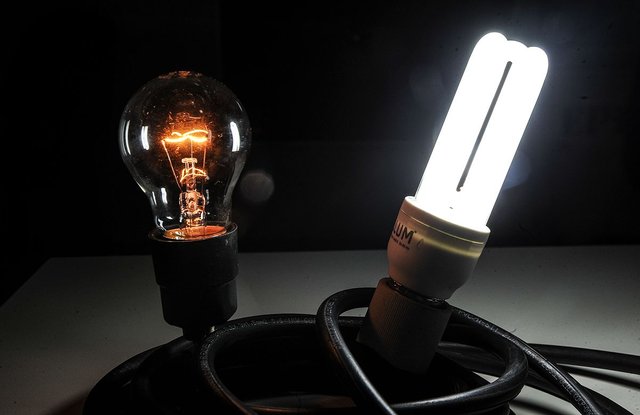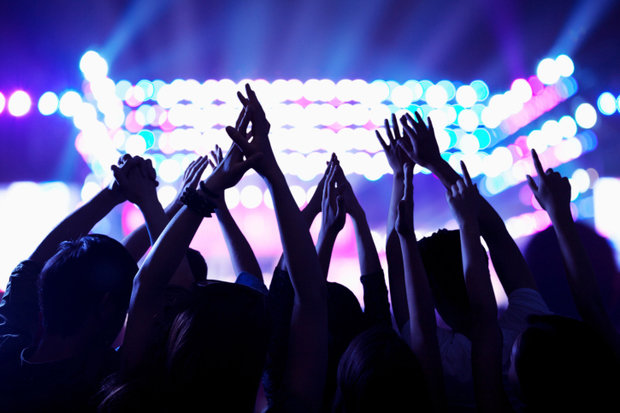Daily celestial challenge by @Sirknight Sunday Theme : LIGHTS
Hey Beautiful peeps
This contest is started by @sirknight . This contest is a great contest . In this contest you must have quality of your blog an also the quantity .
This is a contest of day by day . Having lots of fun. Thank you @sirknight for making this community and contest.
Sunday Theme : Lights
Today I am going to talk about the "lights change our life".
Lights change our life

The term nineteenth century can be characterized as the period that kept going from 1801 through 1900, if the Gregorian schedule is taken after to the letters. It is additionally alluded to as the "1800s." It was the period when the creation of useable power, steel, and oil based goods amid the nineteenth century prompt a moment modern insurgency (1865– 1900), that highlighted the development of railroads and steam ships, speedier and more extensive methods for correspondence, and innovations with names we as a whole know today.
The nineteenth century was likewise the time of machine instruments – devices that made devices – machines that made parts for different machines, including exchangeable parts. The sequential construction system was designed amid the nineteenth century, accelerating the processing plant generation of customer merchandise.
It was likewise this century that brought forth the expert researcher, the word researcher was first utilized as a part of 1833 by William Whewell. Innovators started to plan viable inside ignition motors. The light, phone, , sewing machine, all became an adult amid the nineteenth century. While every one of the creations that were made amid this century, one of the remarkable ones that have profoundly influenced our lives is the light.
Prior to the innovation of the light, helping up the world after the sun went down was troublesome. It took a group of candles or lights to completely illuminate a decent measured room, and oil lights, while genuinely compelling, tended to leave a deposit of ash on anything in their general region. At the point when the investigation of power truly moved in the mid 1800s, creators wherever were clamoring to devise a down to earth, reasonable electrical home lighting gadget.
The creation of electric light changed the world.

It changed human presence by enlightening the night and making it affable to an extensive variety of human exercises. It was the foundation that was worked to give power to each home and business that changed the world. Today, our reality is loaded with controlled gadgets than we can connect to practically anyplace. What's more, we have the light to a debt of gratitude is in order for it.
Toward the beginning of the day, there is daylight. Be that as it may, in the night, individuals utilize power to do assignments. The innovation of light enables us to work during the evening, expanding quality and efficiency. It enable us to spare cash on candles/oil for light and significantly more secure to utilize.
The creation of the light in the nineteenth century was a quite huge development for humankind, and lights are still being used now-more than two hundred years after they were imagined. Rather than depending on candlelight and oil lights, the light permitted us, out of the blue, to illuminate houses and boulevards in a way that was impervious to the components.
How did the development start?
Englishman Sir Joseph Swan and American Thomas Edison both hit the nail on the head around a similar time (in 1878 and 1879, separately), and inside 25 years, a large number of individuals around the globe had introduced electrical lighting in their homes. The simple to-utilize innovation was such a change over the old ways that the world never thought back. Light is a type of vitality that can be discharged by a particle. It is comprised of numerous little molecule like parcels that have vitality and energy yet no mass. These particles, called light photons, are the most fundamental units of light.
Iotas discharge light photons when their electrons wind up energized. On the off chance that you have perused How Atoms Work, at that point you realize that electrons are the contrarily charged particles that move around an iota's core (which has a net positive charge). A particle's electrons have diverse levels of vitality, contingent upon a few components, including their speed and separation from the core. Electrons of various vitality levels involve distinctive orbitals.
As per science , electrons with more prominent vitality move in orbitals more distant far from the core. At the point when a molecule picks up or loses vitality, the change is communicated by the development of electrons. When something passes vitality on to a molecule, an electron might be briefly supported to a higher orbital (more remote far from the core). The electron just holds this situation for a small part of a moment; very quickly, it is moved back toward the core, to its unique orbital. As it comes back to its unique orbital, the electron discharges the additional vitality as a photon, now and again a light photon.
The wavelength of the radiated light (which decides its shading) relies upon how much vitality is discharged, which relies upon the specific position of the electron. Thus, unique sorts of iotas will discharge diverse sorts of light photons. At the end of the day, the shade of the light is controlled by what sort of molecule is energized. This is the essential component at work in about every light source. The primary contrast between these sources is the way toward energizing the particles.
Sir Humphrey Davy of England designed the primary electric carbon bend light in 1801. This light works by snaring two carbon poles to a wellspring of power. With alternate closures of the poles separated at the correct separation, electrical current will course through a "circular segment" of vaporizing carbon making an extraordinary white light.
All bend lights utilize current going through various types of gas plasma. A.E. Becquerel of France estimated about the fluorescent light in 1857. Low weight curve lights utilize a major container of low weight gas plasma and include: glaring lights and neon signs.
In 1835, James Bowman Lindsay showed a steady electric light at an open gathering in Dundee, Scotland. He expressed that he could "read a book at a separation of one and a half feet". Notwithstanding, having culminated the gadget to his own particular fulfillment, he swung to the issue of remote telecommunication and did not build up the electric light any further. His cases are not all around archived, in spite of the fact that he is credited in Challoner et al. with being the creator of the "Radiant Light Bulb".
At that point started things out electric brilliant lights imagined Sir Joseph Swann of England and Thomas Edison the main electric glowing lights amid the 1870s. This lights work thusly: power courses through the fiber that is inside the globule; the fiber has protection from the power; the protection influences the fiber to warmth to a high temperature; the warmed fiber at that point transmits light. Every single brilliant light work by utilizing a physical fiber.
Thomas A. Edison's light turned into the main industrially fruitful glowing light. He got U.S. Patent 223,898 for his brilliant light in 1880. Radiant lights are still in routinely use in our homes, today.
As opposed to mainstream thinking, Thomas Alva Edison did not "concoct" the principal light, yet rather he enhanced a 50-year-old thought. For instance: two creators that licensed a brilliant light before Thomas Edison did were Henry Woodward and Matthew Evan. As per the National Research Council of Canada:
"Henry Woodward of Toronto, who alongside Matthew Evans licensed a light in 1875. Sadly, the two business visionaries couldn't raise the financing to market their creation. The venturesome American Thomas Edison, who had been chipping away at a similar thought, purchased the rights to their patent. Capital was not an issue for Edison: he had the sponsorship of a syndicate of mechanical premiums with $50,000 to contribute – a sizable entirety at the time. Utilizing lower current, a little carbonized fiber, and an enhanced vacuum inside the globe, Edison effectively showed the light in 1879 and, as is commonly said, the rest is history."
In tending to the topic of who created the radiant light, history specialists Robert Friedel and Paul Israel list 22 creators of brilliant lights before Joseph Swan and Thomas Edison. They infer that Edison's adaptation could overwhelm the others due to a blend of three factors: a viable radiant material, a higher vacuum than others could accomplish (by utilization of the Sprengel pump) and a high protection that made power dissemination from a unified source financially viable.+
Another antiquarian, Thomas Hughes, has ascribed Edison's prosperity to his advancement of a whole, incorporated arrangement of electric lighting. The light was a little segment in his arrangement of electric lighting, and not any more basic to its compelling working than the Edison Jumbo generator, the Edison principle and feeder, and the parallel-circulation framework. Different designers with generators and radiant lights, and with practically identical inventiveness and brilliance, have for quite some time been overlooked on the grounds that their makers did not manage their presentation in an arrangement of lighting.— Historian Thomas P. Hughes
Has it extremely changed our lives?
You can see without a fire, or consuming candles, oil lights and lamps, which can be risky left unattended. Likewise no compelling reason to sit tight for sunshine to do all the work that we wish to do. We can work inside in awful climate, even on little nitty gritty assignments, and homes can be worked with littler/less windows to moderate vitality. We can make arrangements to finish employments, and they don't rely upon sunlight hours, or radiant climate to finish them, particularly fine point by point work that requires clear sight. Individuals can work every minute of the day and night, keeping healing center, or medicinal administrations, and police, or security administrations accessible to the individuals who require it. One's life and work when all is said in done don't spin around the season of day, and what the climate, or season may give in the method for brightening.
Brilliant knobs are the most seasoned and, starting at 2010, still the most common kind of electric lighting in presence. Floodlights are expansive radiated, high-power fake lights frequently used to enlighten outside playing fields while an open air sports occasion is being held amid low-light conditions.
In the best levels of numerous expert games,

it is a necessity for stadiums to have floodlights to enable amusements to be planned outside light hours. Night or night matches may .
I hope you guys and ou senior @sirknight likes it.
So the day by day theme of this contest by @sirknight are
☞MONDAY - DARKNESS
☞TUESDAY - ANIMAL~KINGDOM
☞WEDNESDAY - STRUCTURES
☞THURSDAY - FORCES~IN~NATURE
☞FRIDAY - LOVE~BEAUTY~FREEDOM
☞SATURDAY - AGRICULTURE
☞SUNDAY - LIGHT